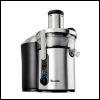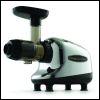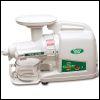Juicing Basics
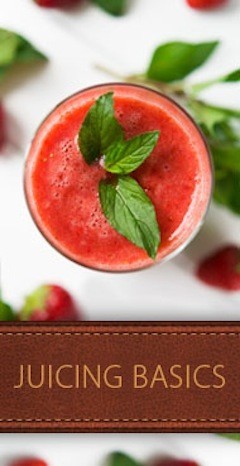
Learn How to Juice Today!
Before you dive into the world of juicing, have a read of these juicing basics.
Looking for something else? Check out:
- How to Make Carrot Juice – 3 Simple Methods
- Is Juicing Good for You?
- Juicing Without a Juicer
- The Healing Power of Juicing
- New to Juicing? Start your juicing journey here.
- Steam Juicing – How to Use a Steam Juicer
Before Juicing
Before you start juicing, there are a few things you need to consider. While juicing promises incredible benefits, you need to review these juicing basics before you begin.
By doing this, you will avoid problems and learn how to maximize the benefits.
Check your Health
People around the world are flocking to juicing and it’s not hard to understand why. After films such as Fat, Sick and Nearly Dead, the world has gone crazy for juicing.
But in all the craziness, it pays to be careful.
Most fruits and some vegetables can be high in sugar, which means they have a blood-sugar raising effect. Juicing lots of apples, carrots and watermelon may make tasty juice, but for certain people, it will have a negative effect rather than a positive one.
It is extremely important to understand this part of juicing basics.
People with blood sugar problems or sugar related illnesses should avoid juicing. If this is you, you must talk to your doctor before you add juicing to your diet.
You Will Have to Adjust
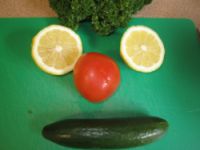
If juicing represents a radical shift in your diet, there will be an adjustment period. It won’t be horrible, but it will be uncomfortable. Don’t worry though, because the grass is greener on the other side. Let me explain more of this part of juicing basics.
If you’ve been eating a typical Western diet, you’re probably not getting the vitamins, minerals and antioxidants you need to live a great life. When you start loading your body up with fresh fruit and vegetable juice, your body will start eliminating a variety of toxins and waste matter.
During this process of detoxification, you may experience mild nausea. Hang in there – this is the natural process of your body as it gets healthier. It’s making room for all those amazing nutrients that you’re feeding it. Please note that if these symptoms last longer than a few days, you need to see your doctor as there may be other issues which are arising.
You would have experienced this part of juicing basics if you’ve ever been a serious caffeine drinker. How did it feel when you stopped drinking coffee for a few days? You probably got headaches, were jittery, or whatever else. But if you stayed true to your word and stayed off coffee, you would have felt so much better for it.
Think of juicing like that. When you start, you might feel a little bad. But stay with it, and I promise you that in just a few days, you’ll be hooked.
One of my favorite juices for juicing basics is called the Beet Juice Liver Cleanser. Within five minutes of drinking it, I can feel it flowing through my body. The first time I felt it happen, my jaw dropped. I simply didn’t know you could feel this good from something like juicing.
Drink Your Juice Slowly
Here’s another juicing basics tip – don’t drink your juice like a shot of alcohol!
Drinking your juice fast will impede the absorption of the vitamins and minerals and will take away from the incredible benefits.
Drink slowly. Enjoy the juice. Pay attention to the taste. Focus on the life-giving nutrients within.
Drink Your Juice Straight Away
A core part of juicing basics is this: firstly, drink your juice immediately after making it. Soon after fruits and vegetables are juiced, they begin the oxidation process. This process causes the nutritional quality to decline.
As such, drink your juice straight after making it to get the most benefit. If you must save it for another time, use an airtight bottle and wrap it in foil (air and light speed up the oxidation process).
Also, drink your juices on an empty stomach. This means an hour before a meal or an hour after. With an empty stomach, the juice is digested immediately and your body will absorb the nutrients faster. If you drink fresh juice immediately after a meal, the juice will begin to ferment while it waits for its turn to be digested. This is highly undesirable.
Get Some Variety
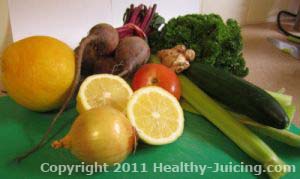
Too much of a good thing isn’t good.
Like almost anything in life, this oft-repeated saying applies to juicing. Too much lemon juice isn’t good for you. Too much carrot and beet juice isn’t good for you. Too much spinach and celery juice isn’t good for you.
Fruits and vegetables contain different vitamins and minerals.
For example, tomatoes contain an antioxidant called lycopene which is one of the reasons tomatoes are red. But lycopene is only in red fruits and vegetables. Conversely, there are some antioxidants which are only available in other vegeteables.
In your quest for profound health with juicing, be sure to get some variety. Don’t drink the same juice every morning. Besides being bad for you in the long run, it will be terribly boring.
Experiment! Use juicing recipes for ideas, but come up with own juices as well. This will give you a great inventory to draw from when you want to make a juice.
How to Improve the Taste
This is a common question when it comes to juicing basics. Improving the taste of fresh juice is simple choosing the right ingredients. Typically, fruits and vegetables that contain higher levels of sugar will taste better and be more palatable.
If you’re looking for ways to improve the taste of the juices you make, try adding ingredients like carrot, beetroot, pineapple, apple and other fruits and vegetables abundant in natural sugar.
Don’t Replace Your Diet With Juicing
While juicing is certainly fantastic, a key juicing basics point is that juicing is not a suitable replacement for a diet. Fiber is essential to digestive health and juicing strips the fiber from fruits and vegetables. This means that you need to ensure you are getting enough fiber from eating raw, solid fruits and vegetables every day.
If you’re up for it, you can try a juice fast whereby you abstain from food for a certain amount of time while only drinking juice. Many people LOVE it, but please be aware that it is not a long-term solution (you can’t juice fast for the rest of your life).
If you’re serious about being healthy, use juicing to supplement a great diet. Ensure you eat raw fruits and vegetables in conjuction with juicing and you shouldn’t have a problem.
Getting Down and Dirty with Juicing Basics
Here’s what you need:
- a juicer
- fruits
- vegetables
How to Choose the Right Juicer
There are three main types of juicers:
Centrifugal Juicers are the perfect fit for the budding beginner. They are cheap, simple to use and easy to clean. They use an extremely fast engine which makes juicing a snap.
Masticating Juicers are a step up in the world of juicers. With a slower engine, they produce juice which is higher in quality and quantity than centrifugal juicers.
Triturating Juicers tend to be expensive, but if you’ve got the cash, you may want to dish out. Of the three types of juicers presented here, triturating juicers make the best juice quality and make the most of it. Despite their pros, they are not suitable for beginners.
How to Use Your Juicer
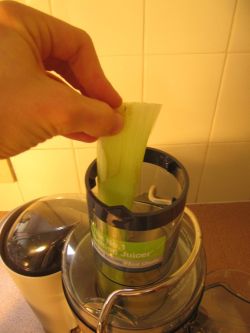
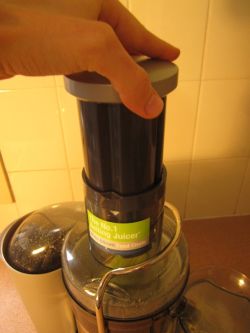
Using your juicer is a simple task, whether you’re using a centrifugal juicer or a masticating or triturating juicer.
After preparing your fruits and vegetables for juicing, the first thing you’ll need to do is turn the juicer on.
Next, put the ingredients into the juicer chute one-by-one and push them down with the included piece.
You’ll find that some things will juice easily (such as celery) and some will take a lot of effort (such as beetroot). Be gentle with your juicer. If you treat it well and it will serve you well!
After Juicing
How to Clean Your Juicer
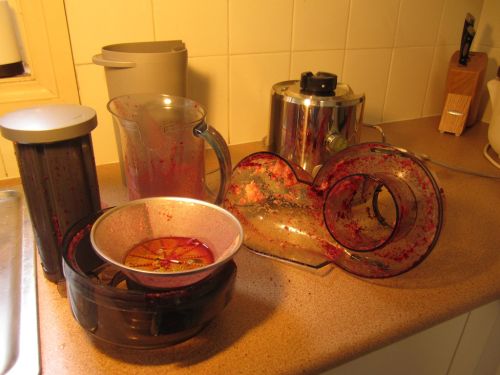
If you’re serious about juicing, then get this part of juicing basics down – clean your juicer!
Don’t wait – clean your juicer immediately after using it. If you don’t, the leftover pulp will dry and begin to smell. Leave it long enough and you’ll have fruit flies buzzing around your kitchen.
Rinse each piece individually. Make sure you get the juice and pulp out from the various cracks and hard-to-reach sections. If you don’t get it all out, your juicer will start to smell.
One of the most important parts of cleaning your juicer is the strainer. Give it a very thorough scrub, as pulp tends to get caught on it.
You can do the above in less than five minutes. Straight after juicing, clean your juicer. Make it a habit and your juicer will look great for a long time.

